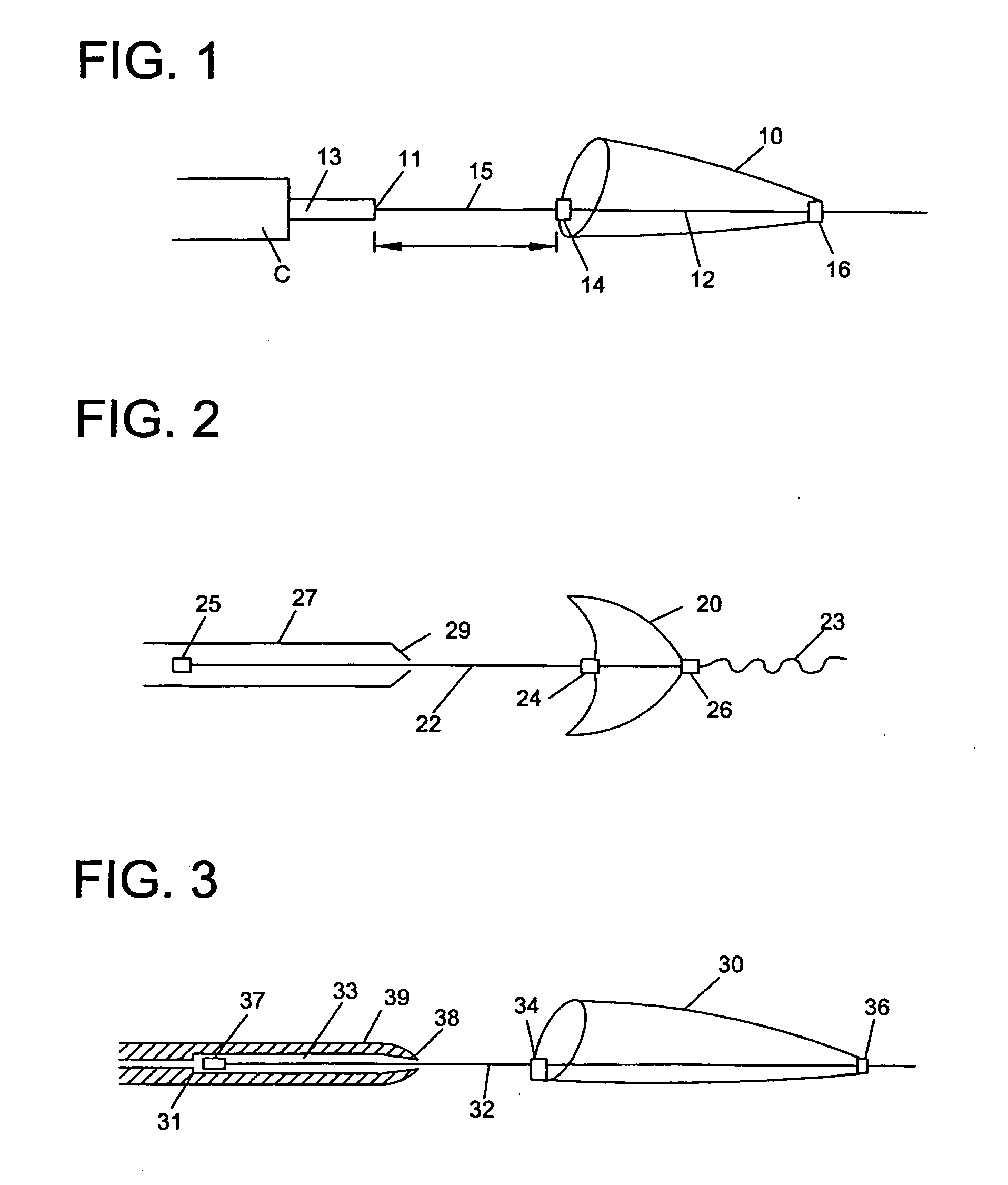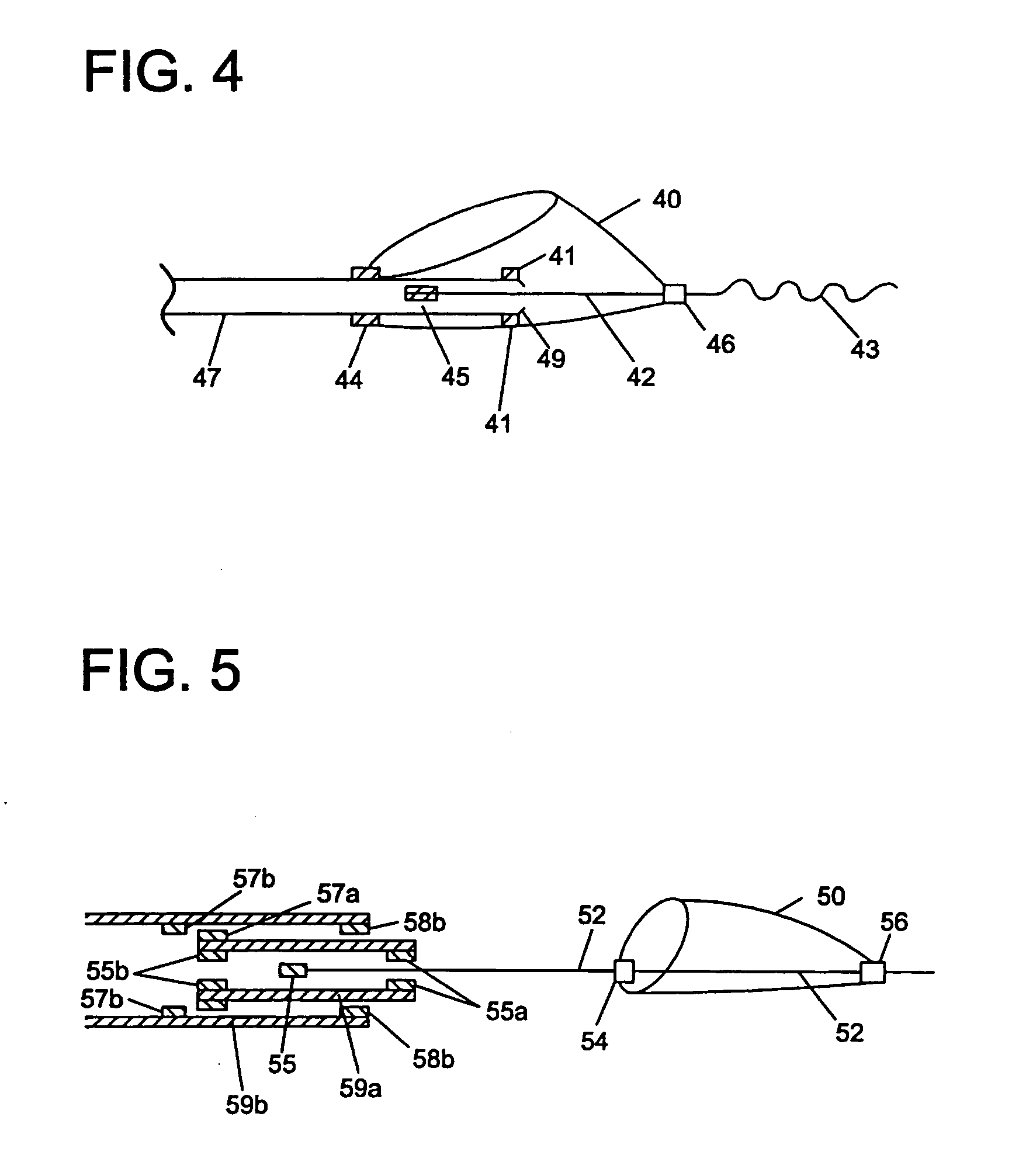Distal protection devices having controllable wire motion
- Summary
- Abstract
- Description
- Claims
- Application Information
AI Technical Summary
Benefits of technology
Problems solved by technology
Method used
Image
Examples
Embodiment Construction
[0047] Various embodiments of the invention are disclosed herein. Some of the embodiments are directed to devices that allow independent movement of the guidewire with respect to the filter or other functional element once the functional element has been deployed. (FIGS. 1-14). Other embodiments are directed to devices having a braking feature. (FIGS. 15-18). Brakes provide a means to cushion the force when a wire, moving with very low friction relative to a filter, encounters a stop. The brake provides tactile feedback that the hard stop is approaching, and this tactile feedback allows the doctor to adjust the motion accordingly. Other embodiments include a shock absorbing feature. (FIGS. 19-27). Shock absorbers act as distance-accommodating springs that are not frictionally independent from the wire. Both allow feedback to the physician so the physician can avoid dislodging or disrupting the functional device by excessive movement of the guidewire carrying the device during a vasc...
PUM
 Login to View More
Login to View More Abstract
Description
Claims
Application Information
 Login to View More
Login to View More - R&D
- Intellectual Property
- Life Sciences
- Materials
- Tech Scout
- Unparalleled Data Quality
- Higher Quality Content
- 60% Fewer Hallucinations
Browse by: Latest US Patents, China's latest patents, Technical Efficacy Thesaurus, Application Domain, Technology Topic, Popular Technical Reports.
© 2025 PatSnap. All rights reserved.Legal|Privacy policy|Modern Slavery Act Transparency Statement|Sitemap|About US| Contact US: help@patsnap.com



